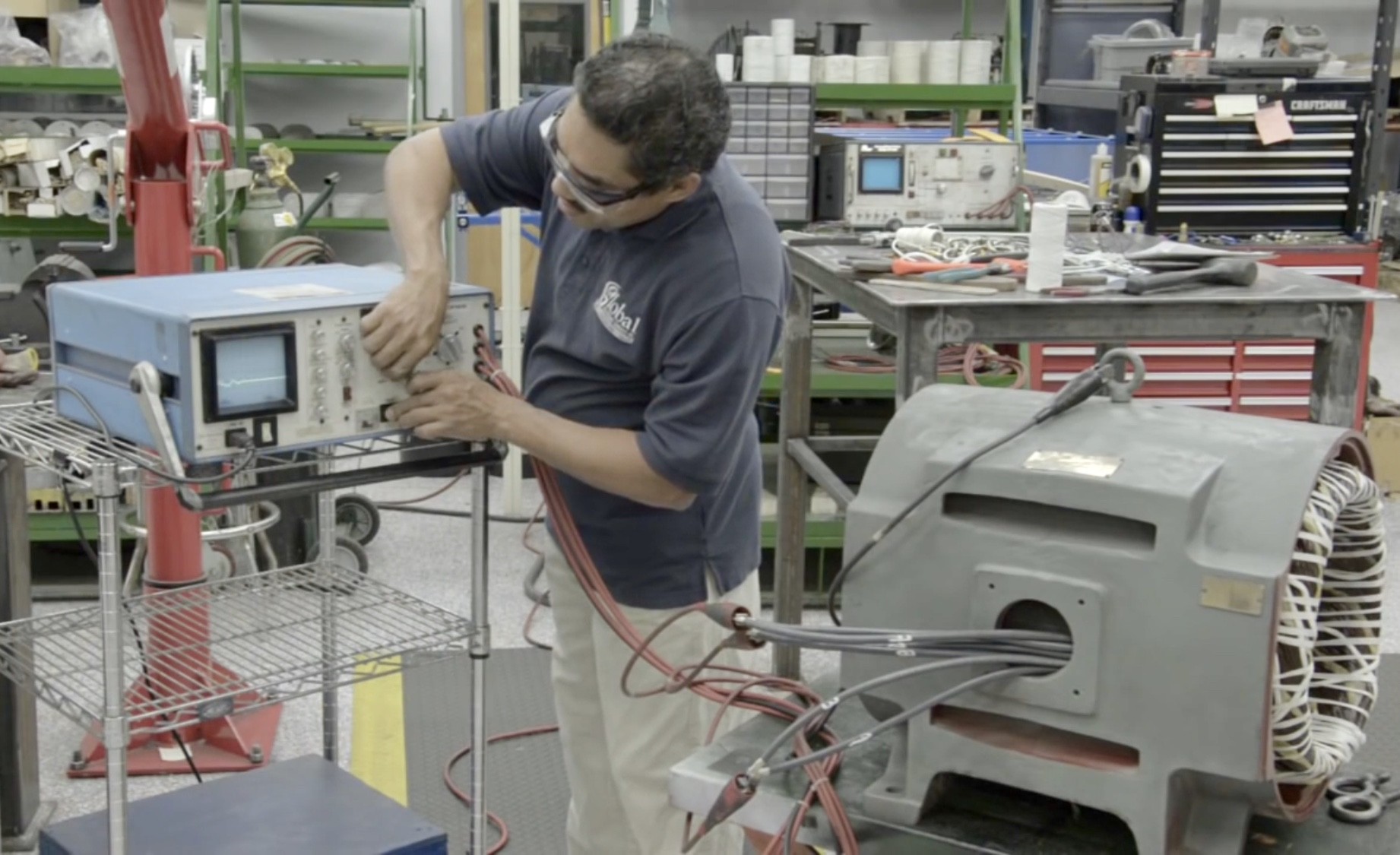

#Dc motor winding resistance series#
To improve the commutation in DC machines, the commutating windings are used, which eliminates the effect of armature reaction and flashover by balancing the armature flux.Ĭommutating windings are the auxiliary windings placed in the slots provided in the pole faces parallel to the armature conductors and are connected in series with the armature. They do not overcome the distortion due to the cross-magnetisation effect. The interpoles only provide the flux which is sufficient to assure good commutation. For a Motor, the polarity of interpole must be opposite to that of the next main field pole in the direction of rotation.


The MMF produced by the armature and interpoles being acted simultaneously by the same armature current. The windings of the interpoles are connected in series with the armature, because the interpoles must produce fluxes that are directly proportional to the armature current. Some small field poles are also attached to the yoke of the machine and placed midway between the main field poles, are known as interpoles or commutating poles. Therefore, by shifting the brushes to the new MNA, the sparkless commutation can be obtained. The armature reaction creates a flux in the neutral zone and due to this flux, a small voltage is induced in the commutating coil. The magnetic neutral axis (MNA) is shifted in the direction of rotation (for the generator) and against the direction of rotation (for the motor) due to the effect of armature reaction. There are two methods of inducing voltage opposite to the reactance voltage

If the value of induced voltage becomes equal to the reactance voltage, then the quick reversal of current in the short circuited coil will take place and there will be sparkless commutation. This induced voltage is in opposite direction to the reactance voltage. In voltage commutation method, the arrangements are made to induce a voltage in the coil undergoing commutation, which will neutralise the reactance voltage. This high contact resistance has the tendency to force the current in the short-circuited coils to reverse according to commutation requirements and then increase in the reverse direction. This increases the resistance between the contact of commutator segments and brushes. In the resistance commutation method of improving commutation, the high resistance carbon brushes are used. In DC machines, there are mainly three methods to obtain good commutation.


 0 kommentar(er)
0 kommentar(er)
